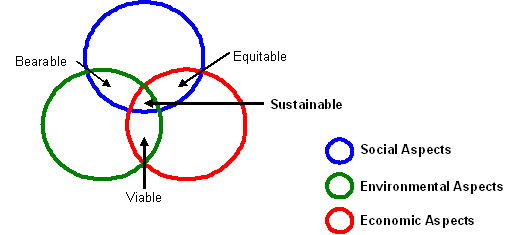What is Sustainable Remediation?
The process of identifying sustainable remediation is defined by SuRF-UK as “the practice of demonstrating, in terms of environmental, economic and social indicators, that the benefit of undertaking remediation is greater than its impact and that the optimum remediation solution is selected through the use of a balanced decision-making process.”
Why adopt Sustainable Remediation?
Soil and groundwater remediation, although designed to remedy contamination and reduce risks to human health and/or the environment, also has the potential to cause environmental, economic and social impacts. If poorly selected, designed and implemented remediation activities may cause greater impact than the contamination that they seek to address. The best solution is remediation that eliminated and /or controls unacceptable risks in a safe and timely manner, and which maximises the overall environmental, social and economic benefits of the remediation work.
What is Sustainability and Why Consider It?
The term 'sustainability' has widespread applications. The main definition was coined in 1987 by the United Nations’ 'Brundtland Commission', formally the World Commission on Environment and Development (WCED), known by the name of its Chair Gro Harlem Brundtland. It stated:
“Sustainable development is development that meets the needs of the present without compromising the ability of future generations to meet their own needs.” (Brundtland, 1987)
This has been taken further by the UK Government with their strategy for sustainable development, the latest revision of which was issued in March 2005 and was entitled 'Securing the Future'. A range of activity is indicated to take the agenda forward, including promotion through:
- Better products and services, which reduce the environmental impacts from the use of energy, resources, or hazardous substances;
- Cleaner, more efficient production processes, which strengthen competitiveness; and
- Shifts in consumption towards goods and services with lower impacts.
It stated that the Government’s sustainable development strategy aims:
“.. to enable all people to satisfy their basic needs and enjoy a better quality of life without compromising the quality of life of future generations.” (HM Government, “Securing the Future”, 2005)
The vision of sustainable human society resides in the simultaneous and synergistic creation of economic growth and equity, conservation of natural resources and the natural environment, and sustainable social development and social justice. Therefore, in essence, it involves social, environmental and financial aspects to be taken into consideration equally. It is often visually represented as shown in Figure 1. Only when all three balance, i.e. at the centre where the three circles overlap, can be truly sustainable (re)development.

Figure 1. The three components of sustainability; the environment, society and economic considerations. Only when all three balance, i.e. at the centre where the three circles overlap, can there be truly sustainable (re)development.
